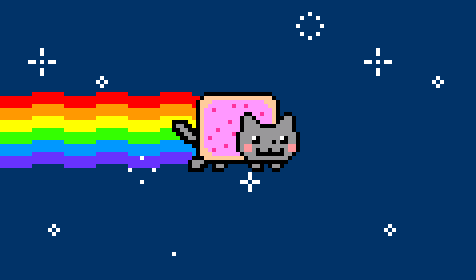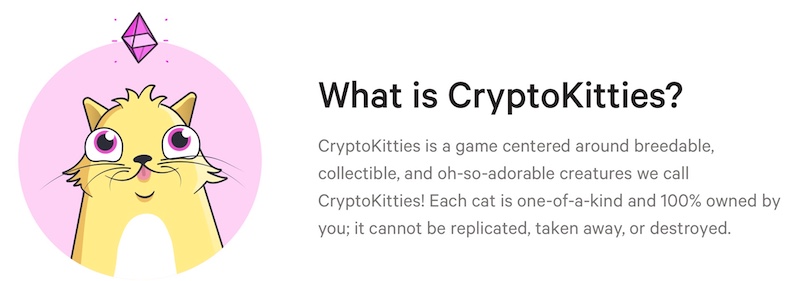Mar 29th, 2021 - Category: Change
As you all know, I enjoy keeping up with technological innovation, but I also love art, and luckily I’ve learned a little bit about Bitcoin (see my articles “A Tiny Bit of Bitcoin” and “Mining Bitcoin with a Pencil and Paper”). This is fortunate because earlier this month I came across The Verge article “NFTs, explained” that contained a large number of unfamiliar concepts and I remember thinking, “These are my areas of interest and expertise, how could I have missed this?!”
Obviously I wasn’t alone since the first sentence of The Verge article is, “There’s nothing like an explosion of blockchain news to leave you thinking, ‘Um… what’s going on here?’” Even the title of the article itself, “NFTs Explained,” didn’t mean anything to me. Luckily it was one of The Verge’s typically well written articles and it clearly explained the main concepts in a Q&A format. It’s well worth the five minute read but I still had a nagging feeling that I didn’t understand the big picture.
 The Verge was right about “an explosion of blockchain news” because in the weeks that followed there were numerous articles about blockchain, NFTs, Ethereum, etc. Especially important was the article “What does it mean to buy a GIF” which drew a parallel between NFTs and traditional art collecting. NFTs still seemed like a strange new world that, for some inexplicable reason, features a lot of cats. There are websites selling them for tens of thousands of dollars. One of the cat’s (that costs $36,037) tagline reads “Shalom. You can call me Muca Grimskicakes. My best friends are a yeti crab and a rabbit.” Art? Really? Wow!
The Verge was right about “an explosion of blockchain news” because in the weeks that followed there were numerous articles about blockchain, NFTs, Ethereum, etc. Especially important was the article “What does it mean to buy a GIF” which drew a parallel between NFTs and traditional art collecting. NFTs still seemed like a strange new world that, for some inexplicable reason, features a lot of cats. There are websites selling them for tens of thousands of dollars. One of the cat’s (that costs $36,037) tagline reads “Shalom. You can call me Muca Grimskicakes. My best friends are a yeti crab and a rabbit.” Art? Really? Wow!
Busy with other projects, I put NFTs (and the cats) aside until I listened to the Postlight podcast “Decentralized Finance” which helped me understand the context and meaning of the key terminology, acronyms, and abbreviations. The pieces of the puzzle finally began to fall into place: DeFi, Dapps, smart contracts, blockchain transacts, ETH versus the Ethereum blockchain, tokens… So here are the highlights of some key concepts:
-
Ethereum (explanation and video) - Just like Bitcoin’s blockchain, it’s a public, distributed database that stores transactions in a chain of blocks that are mathematically connected to each other. This prevents fraud, control, or interference from a third party. Ethereum has the added twist that it not only has it’s own currency (Ether / ETH), but it can also compute transactions for something called “smart contracts” which enable the sale of original artwork (especially cats). The links above have very readable explanations of all these concepts and more. If you would like to see the contents of actual blocks of the Ethereum blockchain, they are publicly available.
-
Non-Fungible Tokens (NFTs) - This is how all original digital artwork gets identified in a unique way. Ethereum has even created an “official standard” for these tokens called ERC-721 which Cryptokitties has already extended with important new parameters such as pregnant and birth. Just today ArsTechnica published another excellent article on NFTs, “Ars Technica’s non-fungible guide to NFTs.” Yes, this article features cats, but it also includes over 200 fascinating comments that provide a glimpse into what techies think about this topic.
-
Decentralized Apps - “Applications” that “run” on a blockchain (not just Ethereum). Many of these involve buying and selling virtual cats, running “exchanges” to buy and sell products, and borrowing / lending money (finance).
-
Decentralized Finance (DeFi) - The finance apps are a whole weird world of their own. The most popular one at the moment is called “Venus Protocol.” The description: “Venus enables the world’s first decentralized stablecoin, VAI, built on Binance Smart Chain that is backed by a basket of stablecoins and crypto assets without centralized control.” Hmmmm…
There are additional details that become important when actually transacting such as “smart contracts” (how transactions stay safe and secure), “gas” (payment exacted for a transaction), “tokens” (the fungible kind are a bit different), and more.
To finish this discussion, it’s worth noting the societal issues involved. First, returning to the Postlight podcast, Paul Ford and Rich Ziade are long time technology experts and run a successful digital strategy / engineering studio in New York City. Of special interest might be the discussion at the 23 minute mark where they explore the power of large numbers of people wanting to connect by truly believing that cryptocurrencies and technologies are going to transform the financial world. Rich calls this “the power of affinity.” Personally, I think the Game Stop stock short squeeze is another example of this phenomena. Also at the 32 minute mark, Paul addresses the fact that at its core, this is an example of a technology that is completely built around financialization. He calls this a “pathology in our culture.” Strong words. Finally at the 37 minute mark you can hear three experts explain decentralized apps, finance, blockchain, and more.
So how do you actually buy something? I’ve read the entire FAQ and I still have no idea! Maybe it’s a little too soon to try to use DeFi to finance a company as well?
